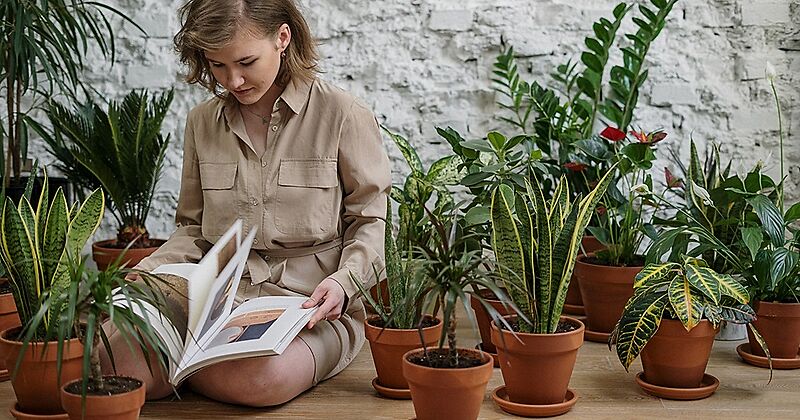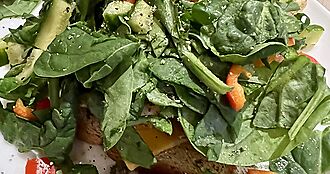Shouldering Consumer Wants

This article was originally published by Greenhouse Management Magazine for their July 2014 issue. Pdf of print article with photos linked below.
Homeowners, apartment dwellers, landscapers, and foodies are increasingly looking to retailers to satisfy their year-round gardening wants. This growing trend is providing opportunities for breeders and growers as they strive to provide the specialty crops necessary for attracting off-season traffic. These shoulder crops will help satisfy the off-season gardening itch of consumers while enabling you to turn more inventory. Working with retailers to better define customer personas and their seasonal needs can help you fine tune your niche production schedule.
Filling gaps and defining niches
Growing shoulder crops is traditionally a means for gardeners to extend their harvest seasons with edibles. By filling the relatively short gaps of time at the start or finish of traditional seasons with quick-turn crops, gardeners can maximize space and increase yields. Growers, and the retailers they serve, can use the same technique to both maximize profit per square foot and simultaneously meeting niche-season customer demand. While shoulder crops are traditionally thought of as edibles, the concept translates easily to ornamentals. In fact, there are many ways to redefine the term and get creative with how you fill your bench space.
If you’re heating empty space in your greenhouses, then you most likely already have available openings for shoulder crops. Take a look at the timing, temperature, and space you have available and match quick-turn crops that have the same production requirements. Obviously, cost management is always a factor; you never want to jeopardize your core crop profitability for a shoulder crop.
Of course, the types and timing of shoulder crops will vary widely depending on your region and climate. In northern areas, traditional “shoulder seasons” are early spring and autumn. In warmer climates, early spring starts much earlier and planting can continue year-round; there are several transition periods with more frequent color changes.
Depending on your production cycle, you may be able to identify more than two seasons of shoulder crop opportunities. Talk to your retailers to find out what customers are looking for during these slower periods to see if you can work together to match needs. Communicating with your retailers also opens opportunities to have them pre-book and pre-promote your shoulder crops.
The right fit
With edibles in high demand, it might be a smart move to fill empty space on the benches in January with quick crops of leafy greens like lettuce, spinach, and chard. If you’re in warmer regions, plants like nemesia, delphinium, osteospermum, cherinathus, and diascia are in demand for planting in late-January and February for early spring color. Perhaps you’ll want to jumpstart bare-root strawberry plants or other bare-root berries in pots for your customers.
Mixed bulb pots and planters can be forced on in cooler greenhouses in cold climates, or outdoors during winter in warmer areas. They are a great way to help jumpstart the spring season and holidays like Valentine’s Day. Or, you may simply update a traditional shoulder crop you’re already growing, such as poinsettias, to better reflect what your end user really wants.
Refresh and renew
Just because you want to keep growing the same cultivar selection year after year, doesn’t mean people want to keep buying them from you. Sometimes, you might need to refresh a major crop you’re already growing for a niche season.
Using poinsettia again as an example, this seemingly ubiquitous plant is already a shoulder crop, albeit one with a long production cycle. Whilst running an IGC, I experienced something that most IGCs have over the last decade; customers don’t buy the quantity of traditional poinsettias from garden centers anymore because they can buy them at many other places. So, I switched up the kinds of poinsettias I sold.
What my customer did want was the really unusual new varieties of poinsettias they couldn’t find at the grocery store or home improvement store; and they were ravenous for mini-poinsettias. They also wanted really large specimens and standards unavailable at mass merchants. What I needed were growers willing to change up their varieties more often to provide newer selections and unusual forms, plus offer up plenty of 2- to 3-inch poinsettias for tabletop decorating and gifts. If your poinsettia sales are slumping, or you’d like them to be more profitable, figure out what your end user really wants and how they plan to use the plants in new ways; then be willing shake things up a bit on the bench.
Repurpose and recycle
We can also redefine shoulder crops to include plants that we repurpose for a nontraditional use. For example, tropical houseplants and seasonal potted plants can be used for warm-season bedding color and outdoor containers. In the last couple of years I’ve seen more and more croton and small hibiscus transplants used in upscale color bed plantings. Rex begonias make excellent shade bedding color. Succulents are in high demand for both indoor and patio decorating. Who says you can’t take the indoors outdoors or vice versa?
Edibles and herbs aren’t solely for the veggie garden; they also make fantastic ornamentals. Swiss chard, leafy greens, and parsley are the perfect companion plants in landscape beds and containers alike. In southern climates, these plants are beautiful all winter long. Gardeners who visit the garden center in November are looking for cold hardy and colorful plants to reset their winter containers and beds. Additional shoulder crops of these plants repurposed for ornamental use can help extend the autumn season or jumpstart the spring.
Scale to fit
Urbanization and the shrinking scale of gardens should also influence niche crop production. People are living smaller now in terms of yard space. As people choose to stay in the city, instead of commuting from the suburbs, many are relegated to patio or balcony gardening. As a result, dwarf-sized patio veggies and many other “mini” plants are seeing a major upswing.
Can you offer smaller sizes of plants earlier in the season to catch the early bird gardeners, or larger specimens later to catch the procrastinators? Producing quick-turn 2-inch starts of lettuces can help gardeners get an early jumpstart on their salad garden. How about bumping up a late-season shoulder crop of tomatoes into 2-gallon pots for the late bloomers? Indoor and patio gardeners are constantly looking for tiny plant specimens for terrariums and mini-gardens. Certain tropicals, herbs and succulents can also be quick-turned in 2- to 3-inch pots.
The same goes for nursery stock: One woman’s landscape shrub is another woman’s perfect container specimen. While a bevy of conifers color the landscape in more northern climate, they just don’t cut the mustard down south. However, small containers or liners of “mini” conifers, which can be produced much more quickly than their landscape counterparts, make the perfect evergreen winter container specimens.
Real estate matters
When I teach gardening classes, I always make sure to cover the topic of “maximizing your garden real estate to maximize your yields.”
This maxim applies to growers and their use of shoulder crops. When done right, shoulder crops are a great way for maximizing your greenhouse bench real estate and profit margins.


